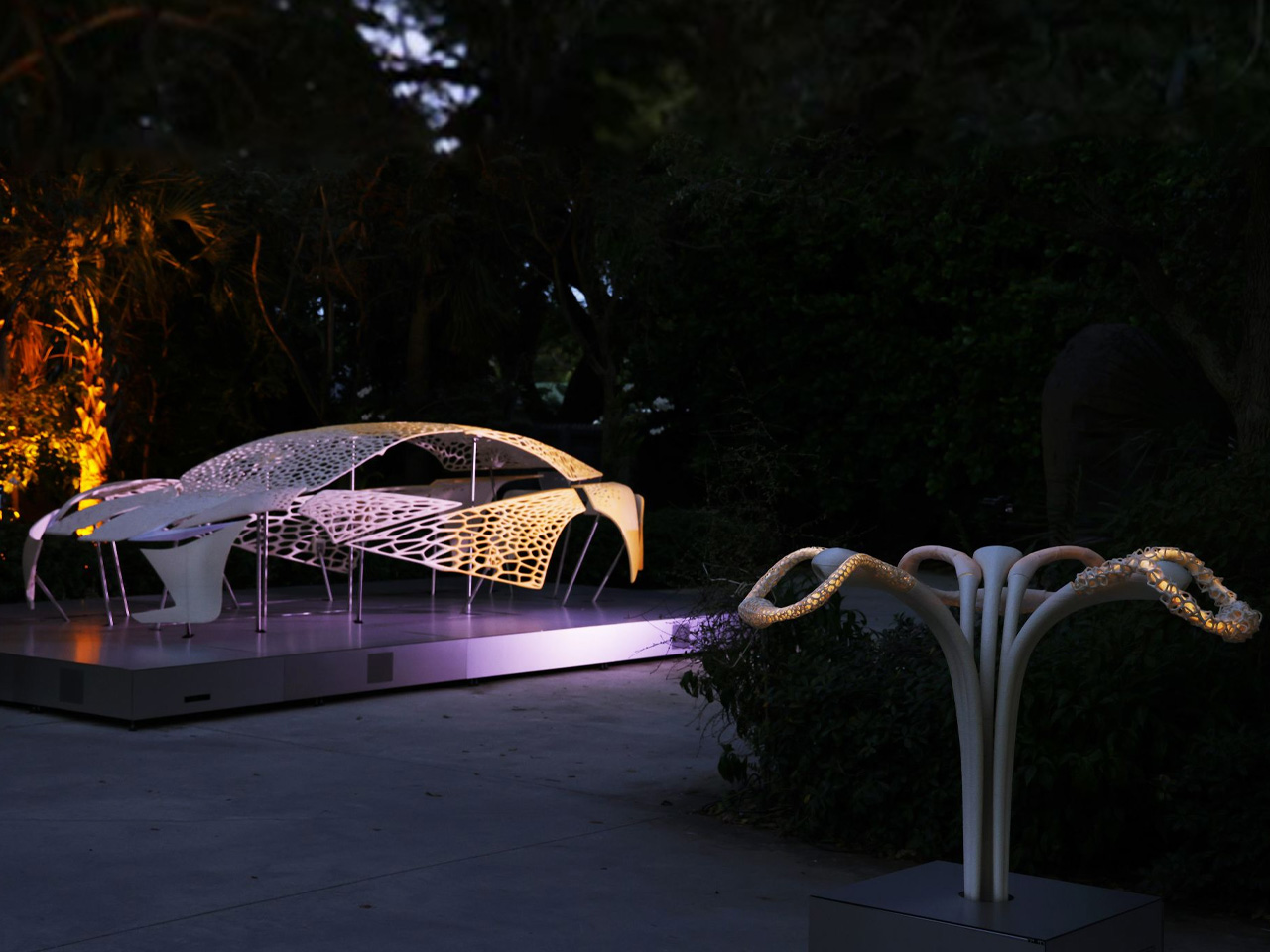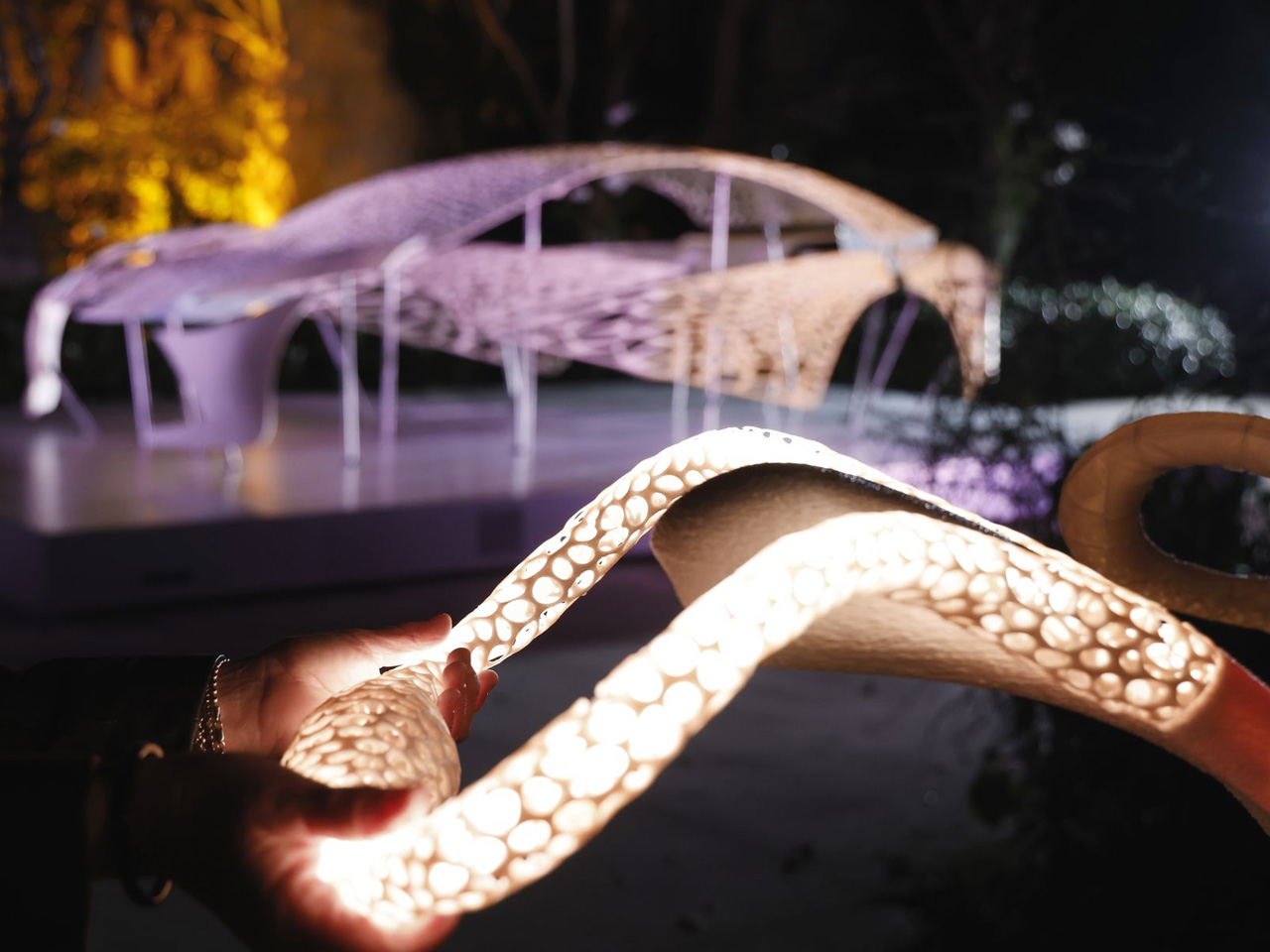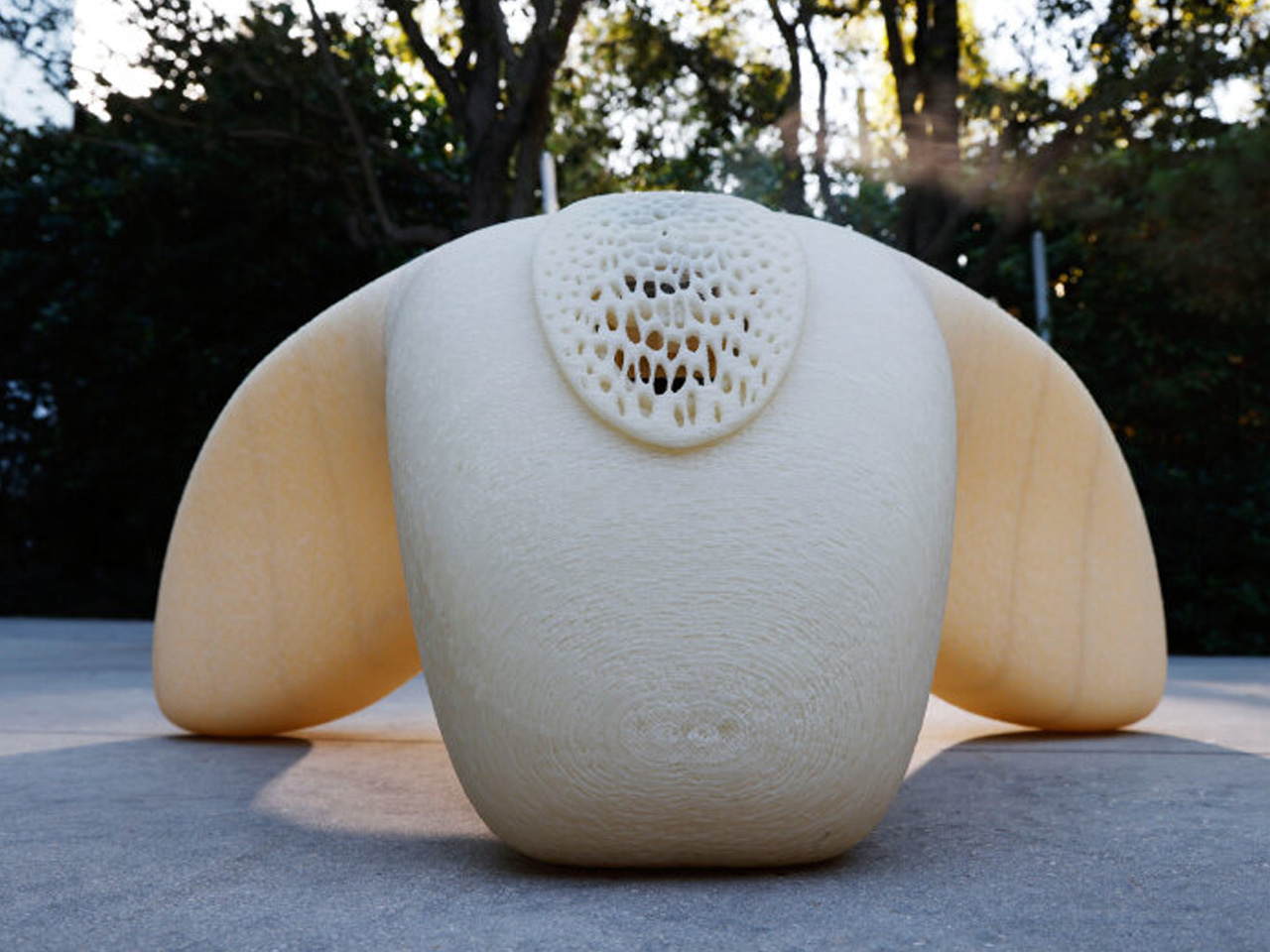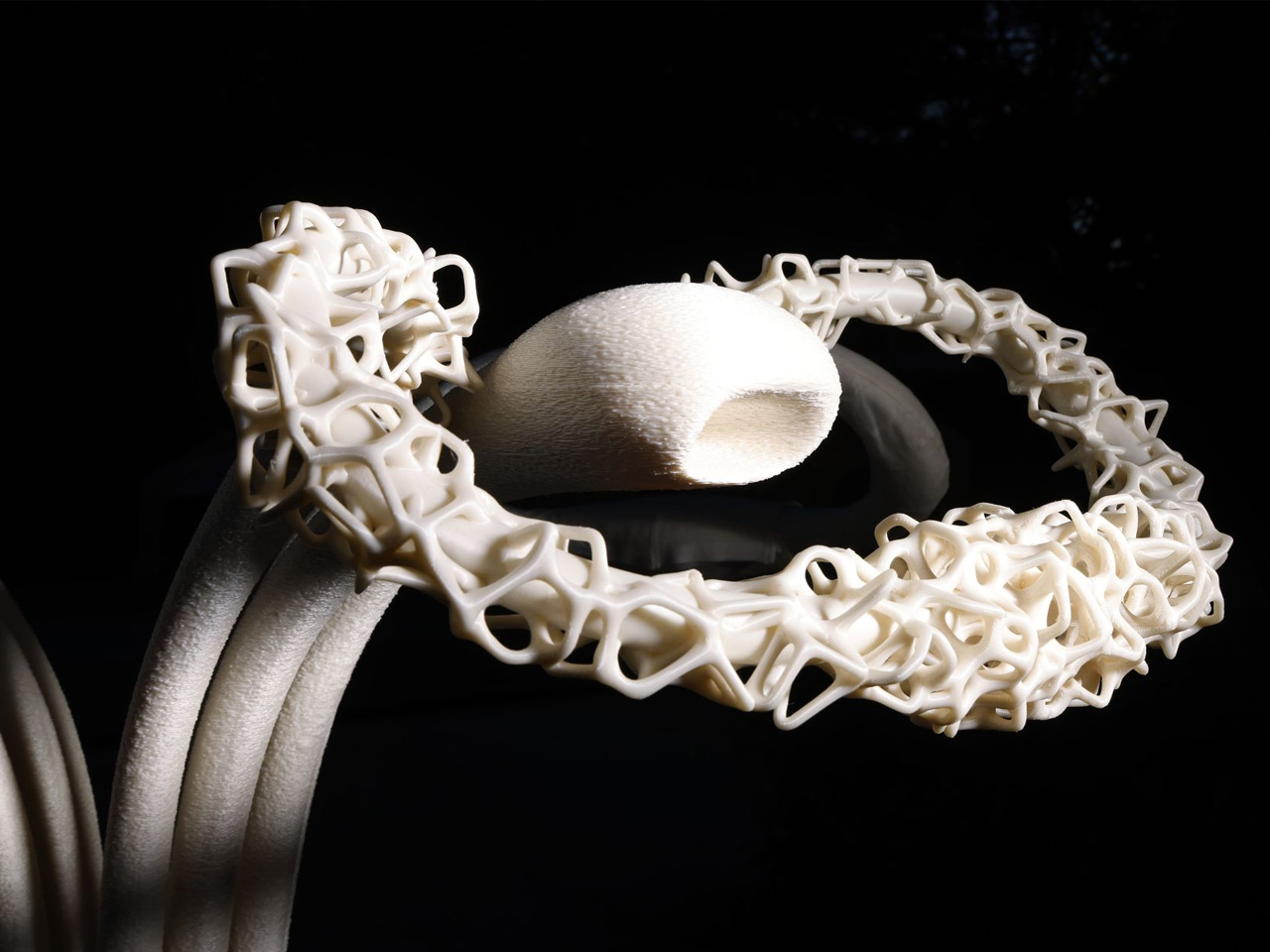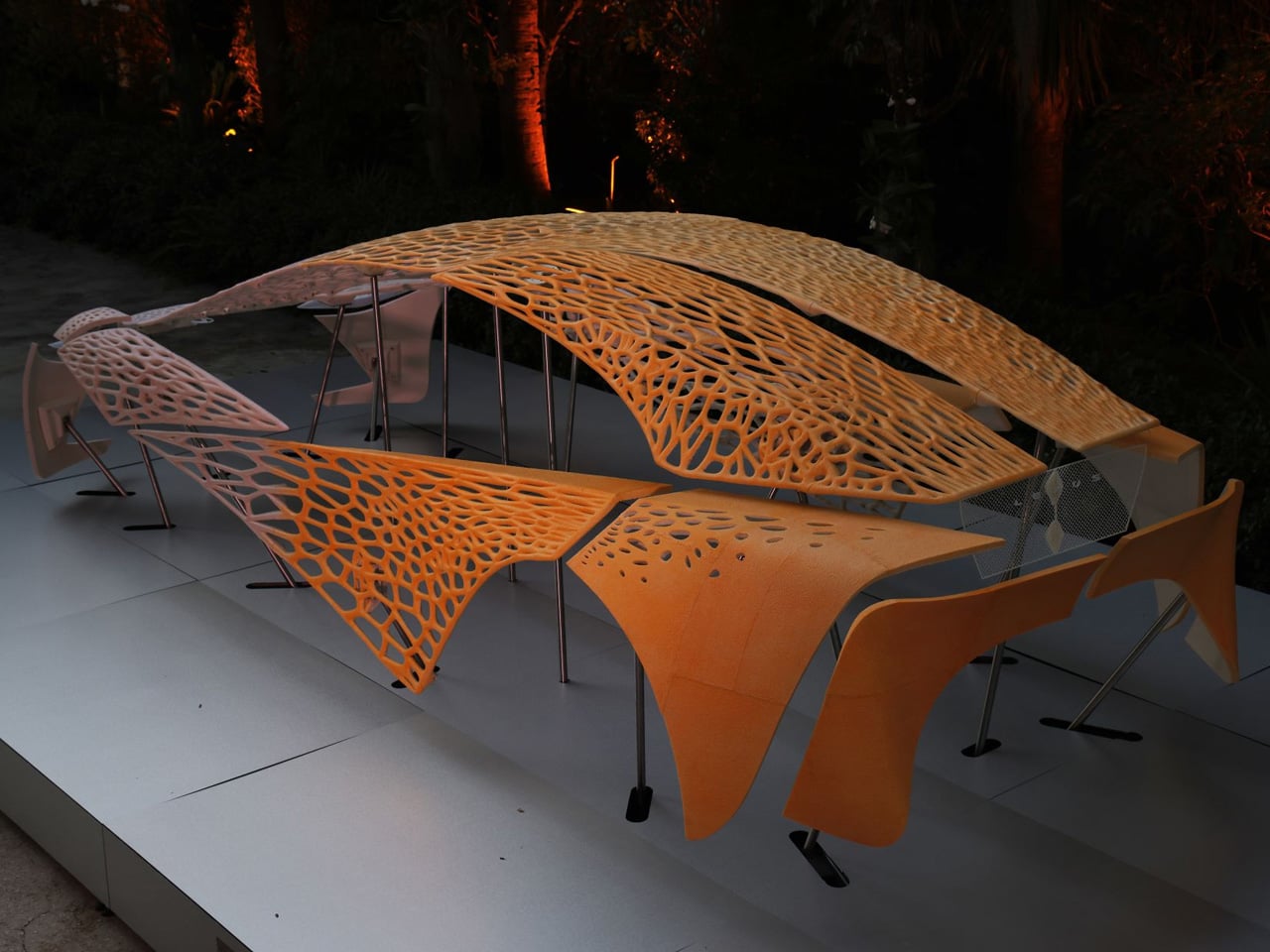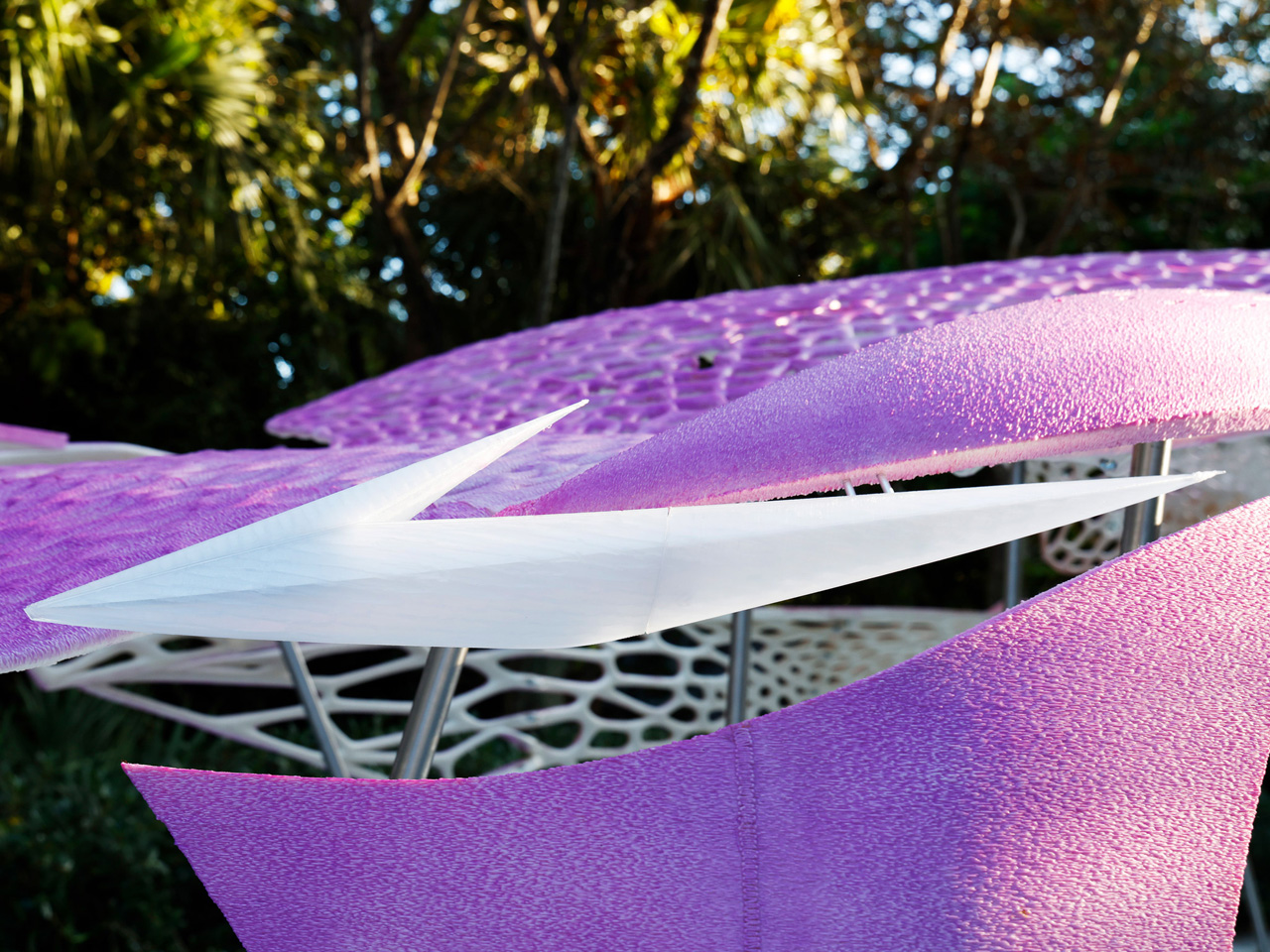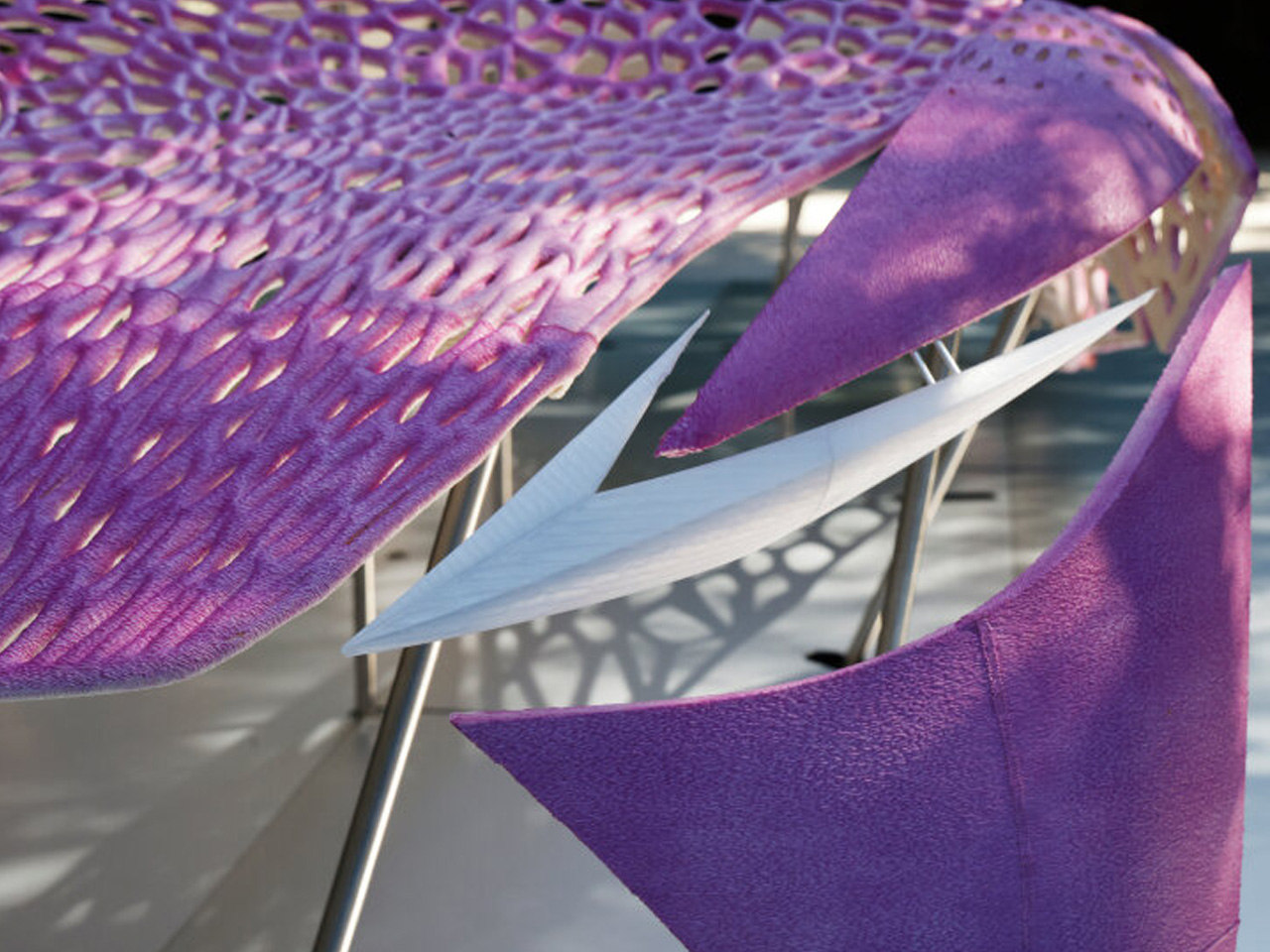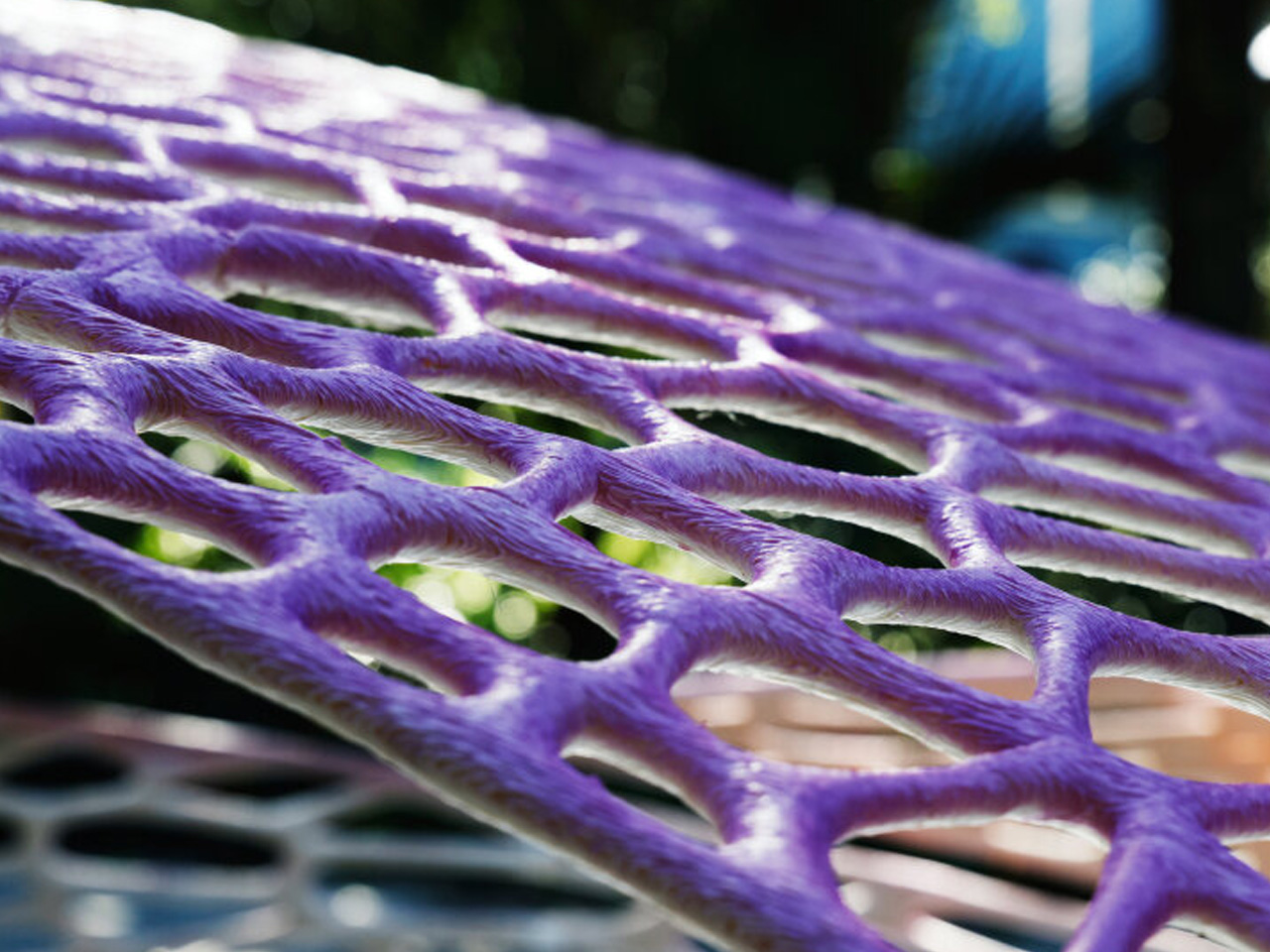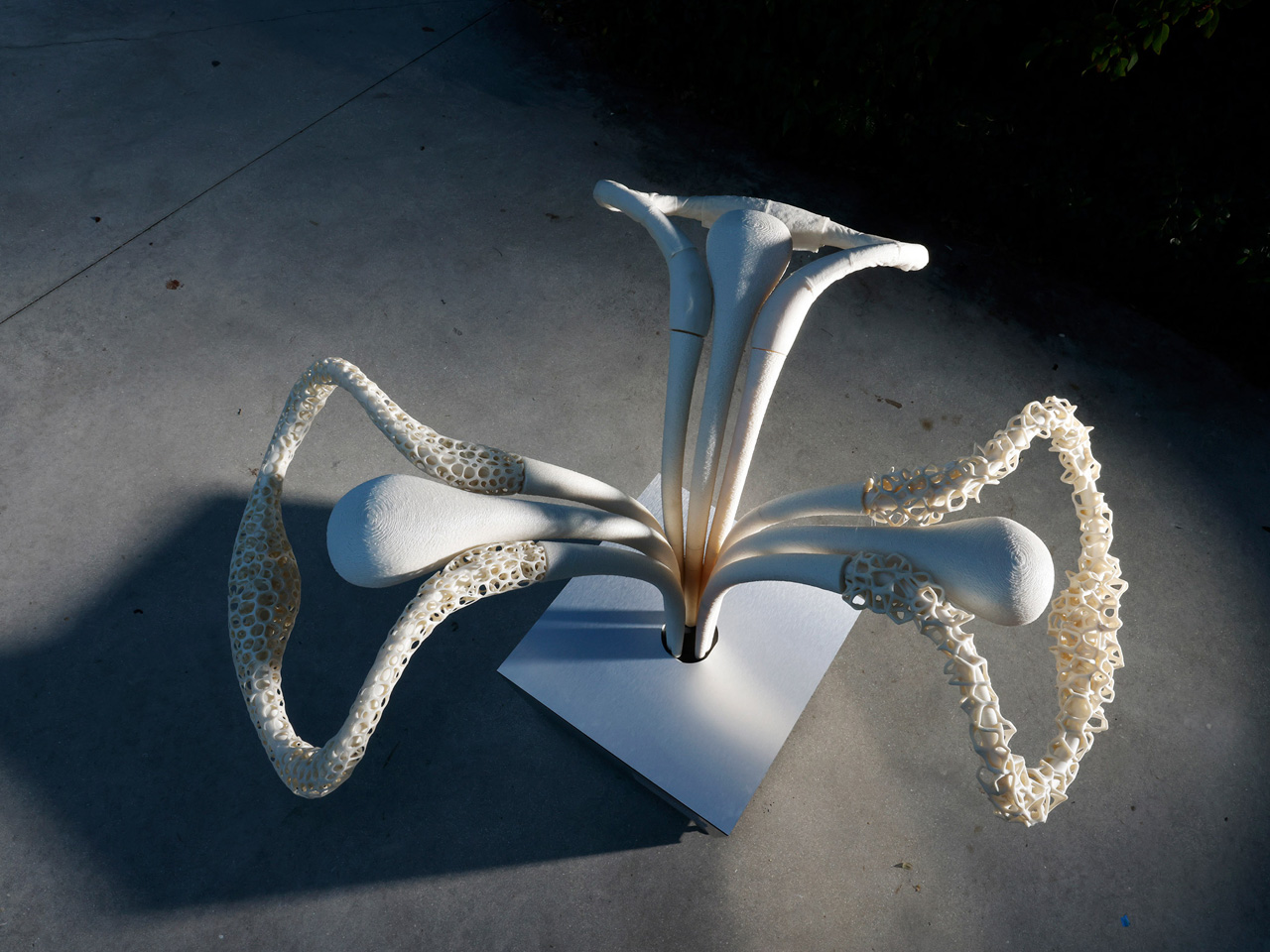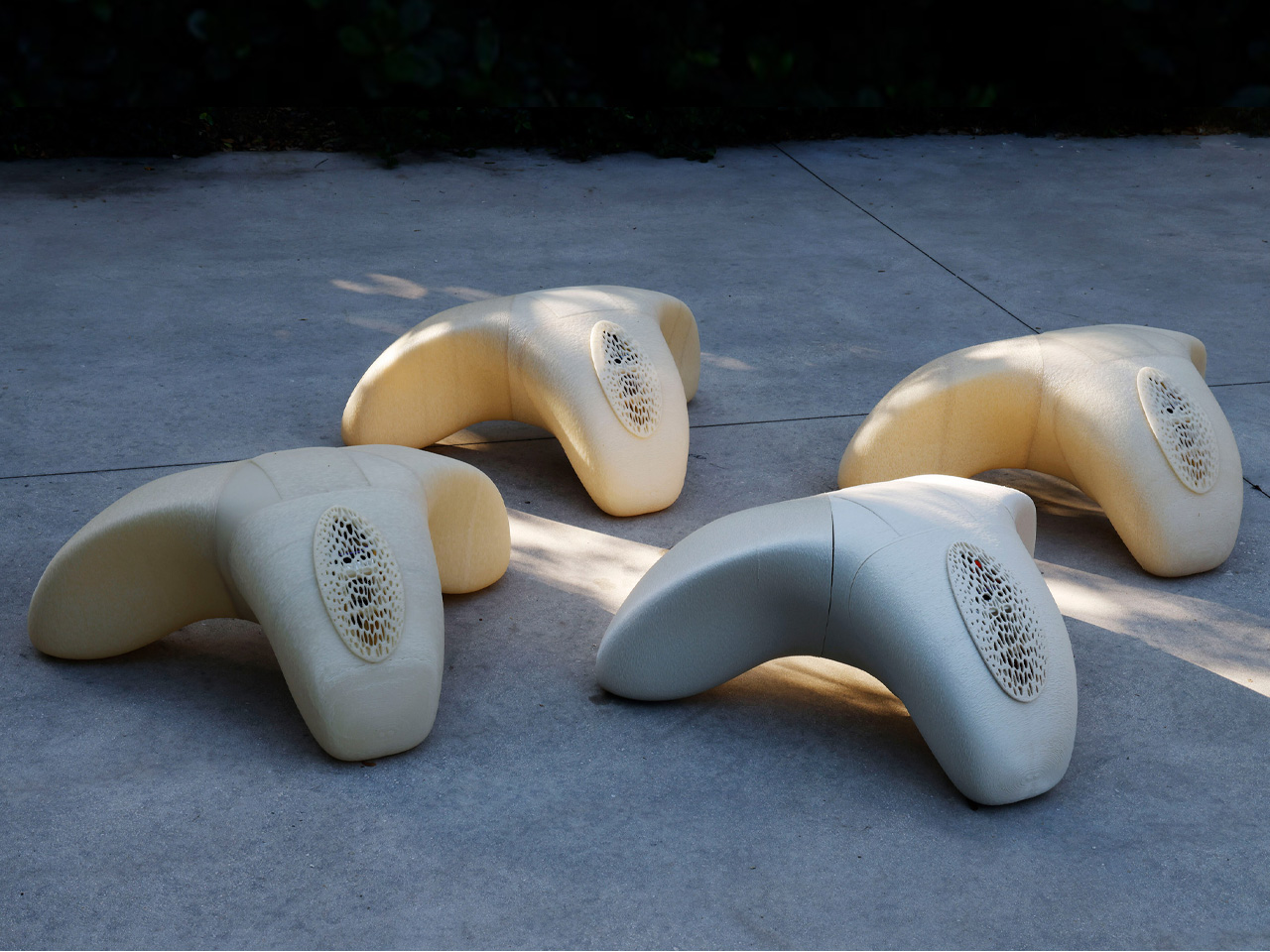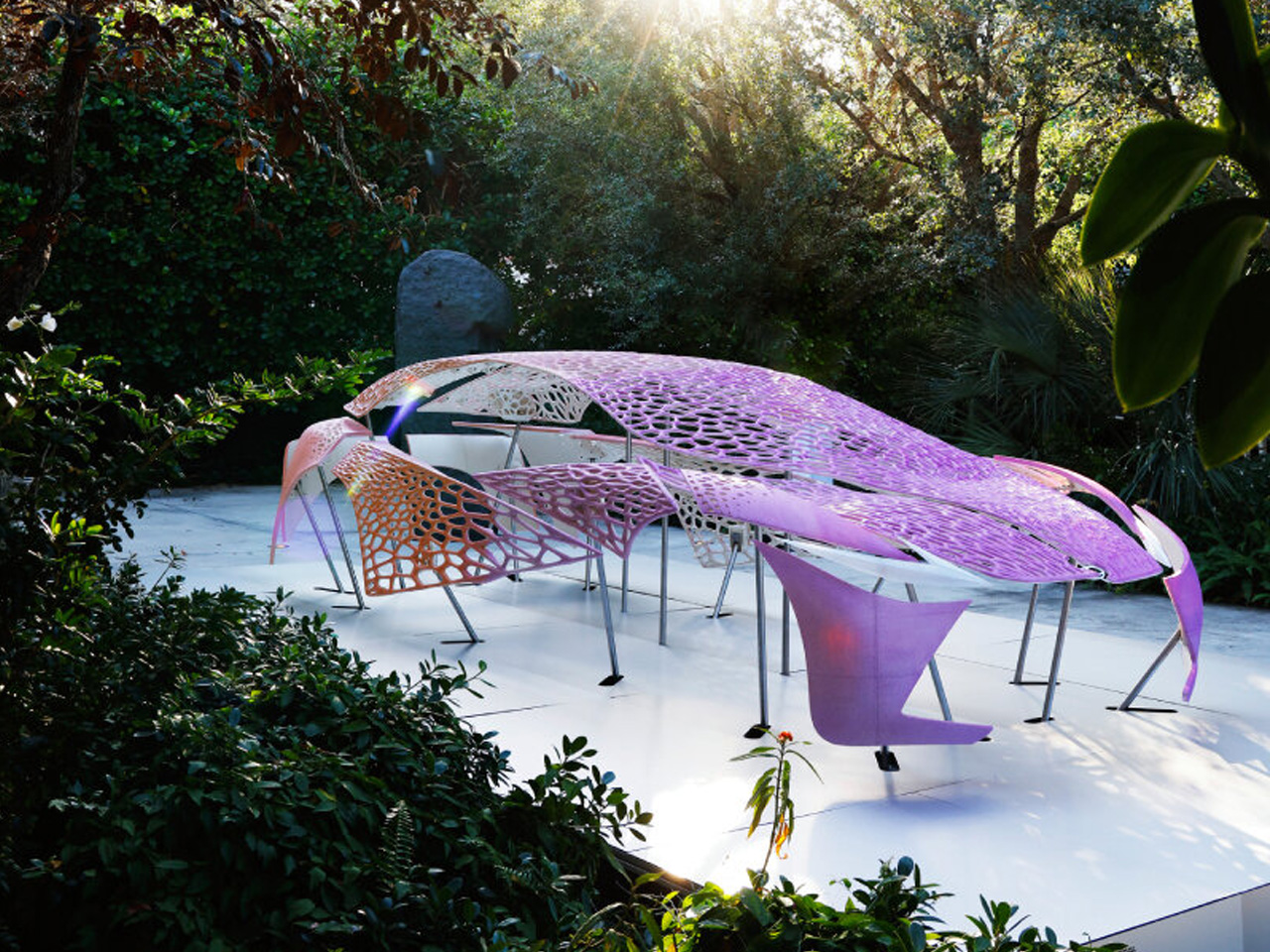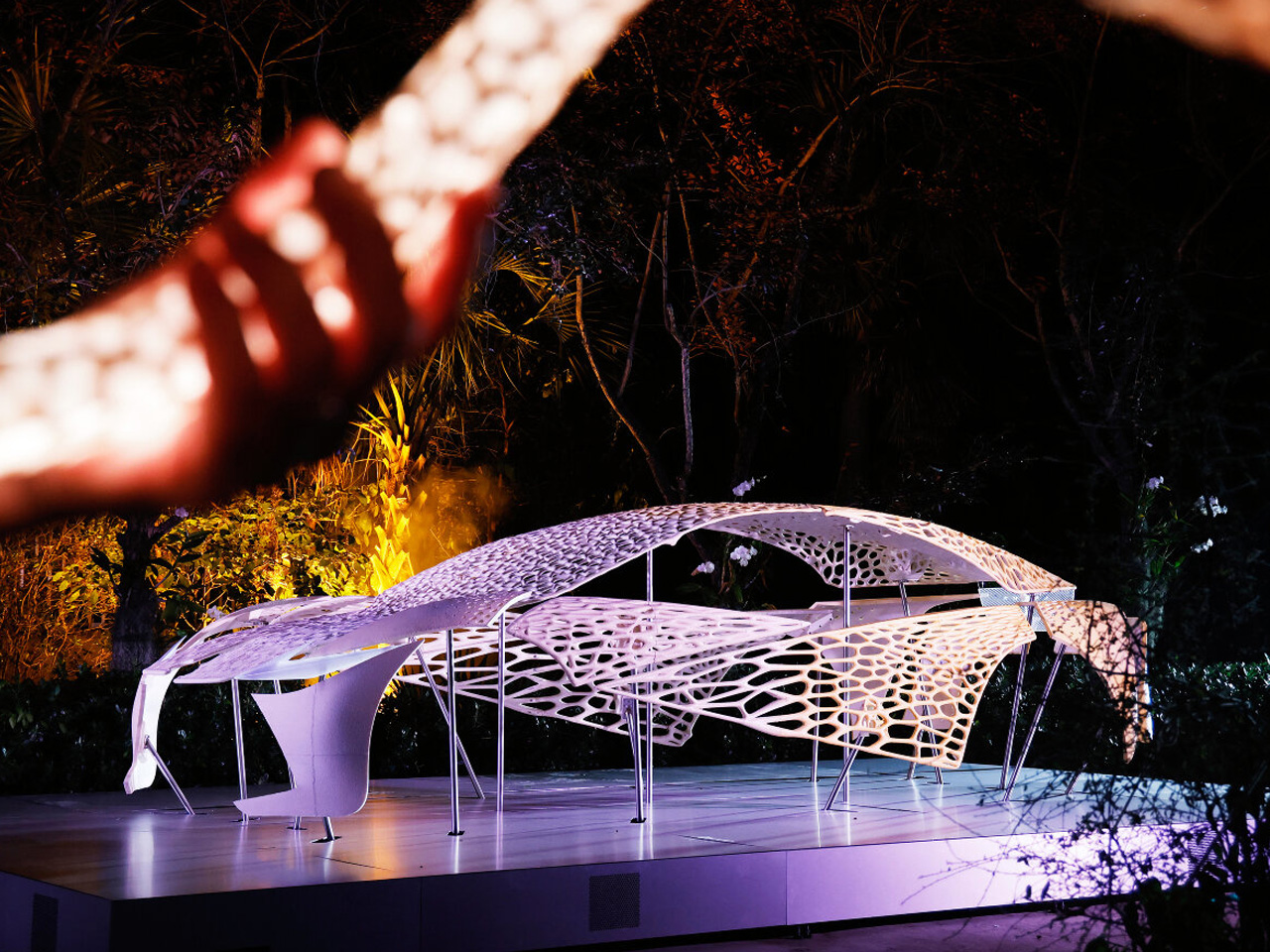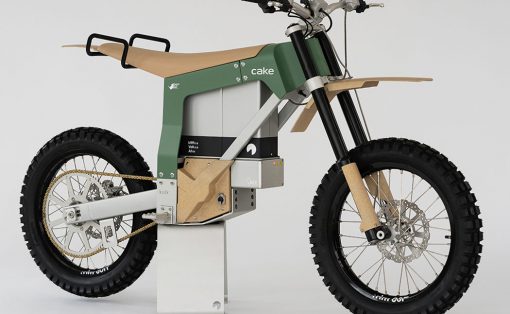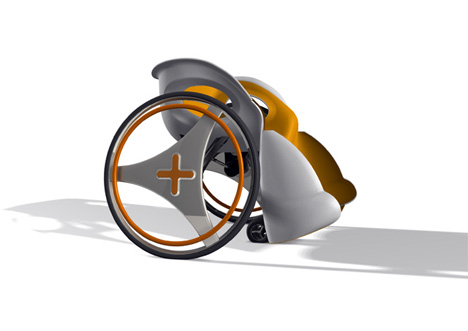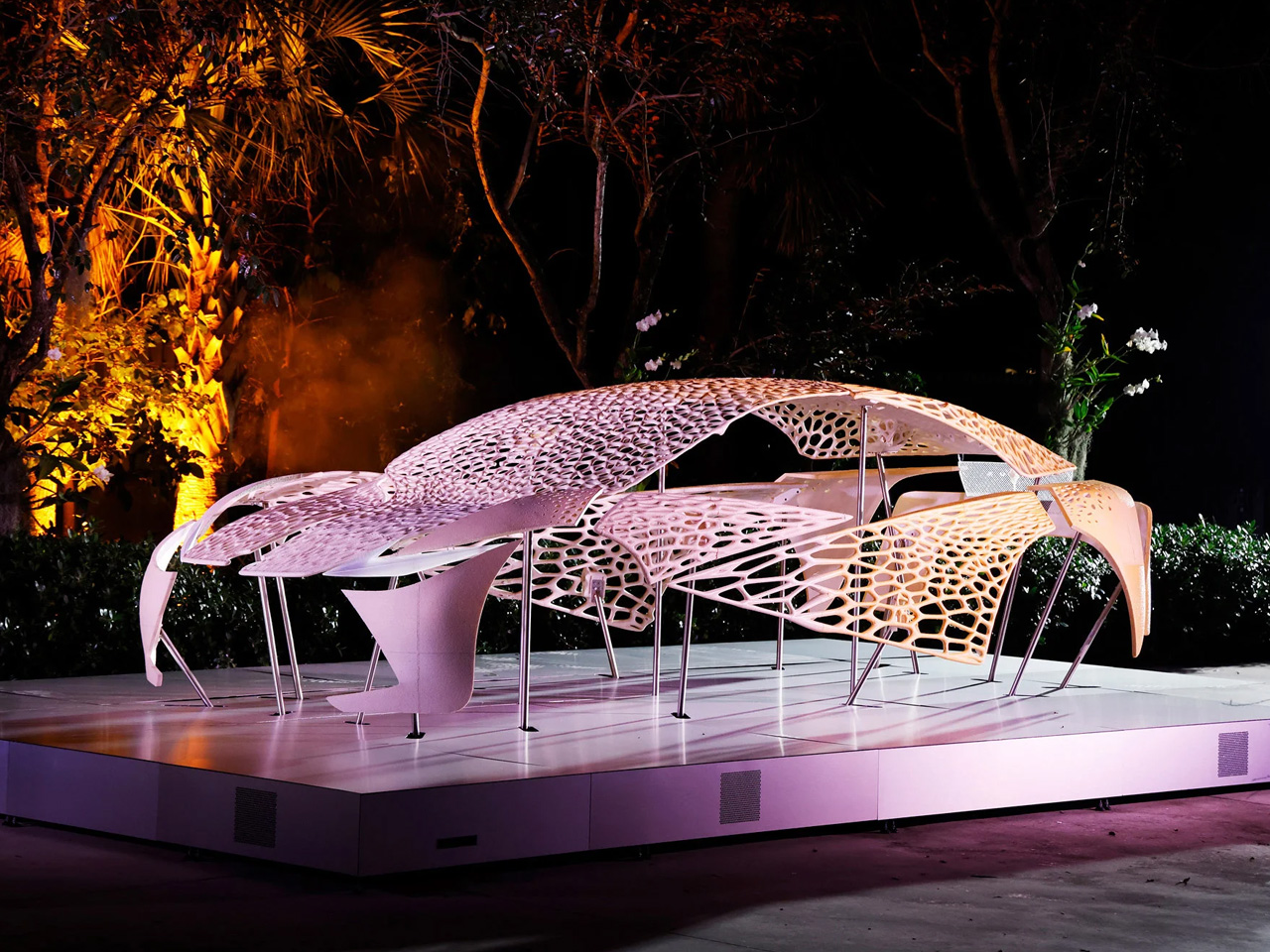
Lexus has collaborated with Bratislava-based research and design studio Crafting Plastics to create an installation that revolves around material objects. Dubbed Liminal Cycles, the creation is inspired by the all-electric Lexus LF-ZC (Lexus Future Zero Catalyst), implementing an abstract installation that explores the various senses and elements of a vehicle. This is in tune with the brand’s AI-driven software.
The mesmerizing kinetic structure is a layered skeletal made out of 3D-printed bioplastic (called Nuatan) in the shape of LF-ZC’s body. This installation designed by Germane Barnes, Michael Bennett (Studio Kër), Suchi Reddy, and Tara Sakhi is on display at the sculpture garden of the Institute of Contemporary Art, Miami. This breathable sculpture acknowledges the adaptability and responsive technology of the developing concepts of SDVs (Software Defined Vehicles) that envision the software-enabled customization of luxury vehicles.
Designer: Lexus and Crafting Plastics
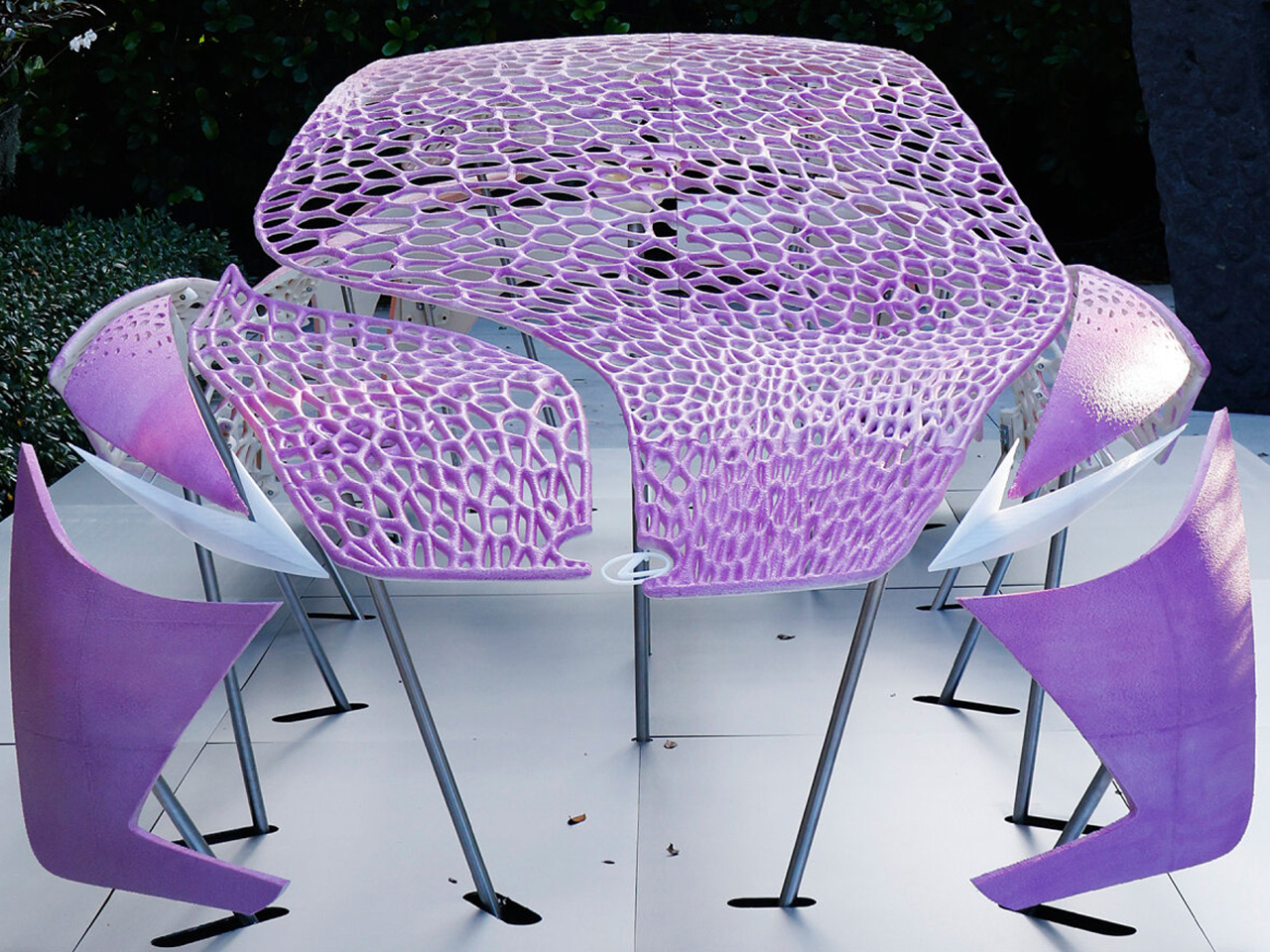
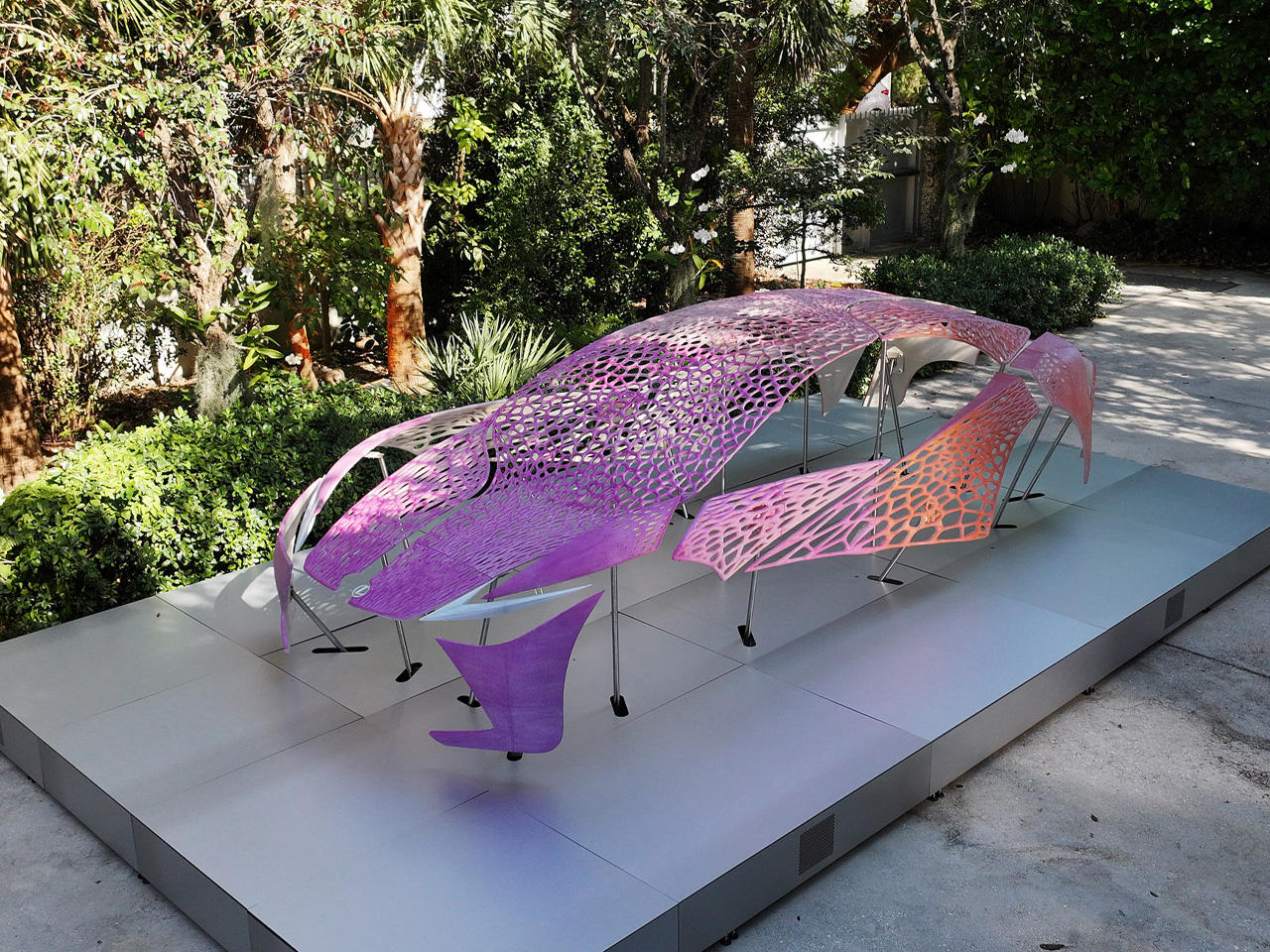
The culmination of automotive technology and global art and design audience, the installation is a first mover advantage in the “bold and uncompromised experiences for the next generation,” according to Lexus’ press release. This 1:1 version of the real thing is not harsh to the environment in any way as the bioplastic material is based on 100% renewable resourcing with no traces of microplastics left behind. To enhance the dynamism of the sculpture it is coated with UV-responsive material skin. Thus, it reacts to environmental stimuli including changing position of lights, the intensity of UV radiations, or the viewer’s proximity. Based on these dynamic changes the sculpture can expand or contract in real-time, just like breath-like movements, thus representing the harmony between nature and technology.
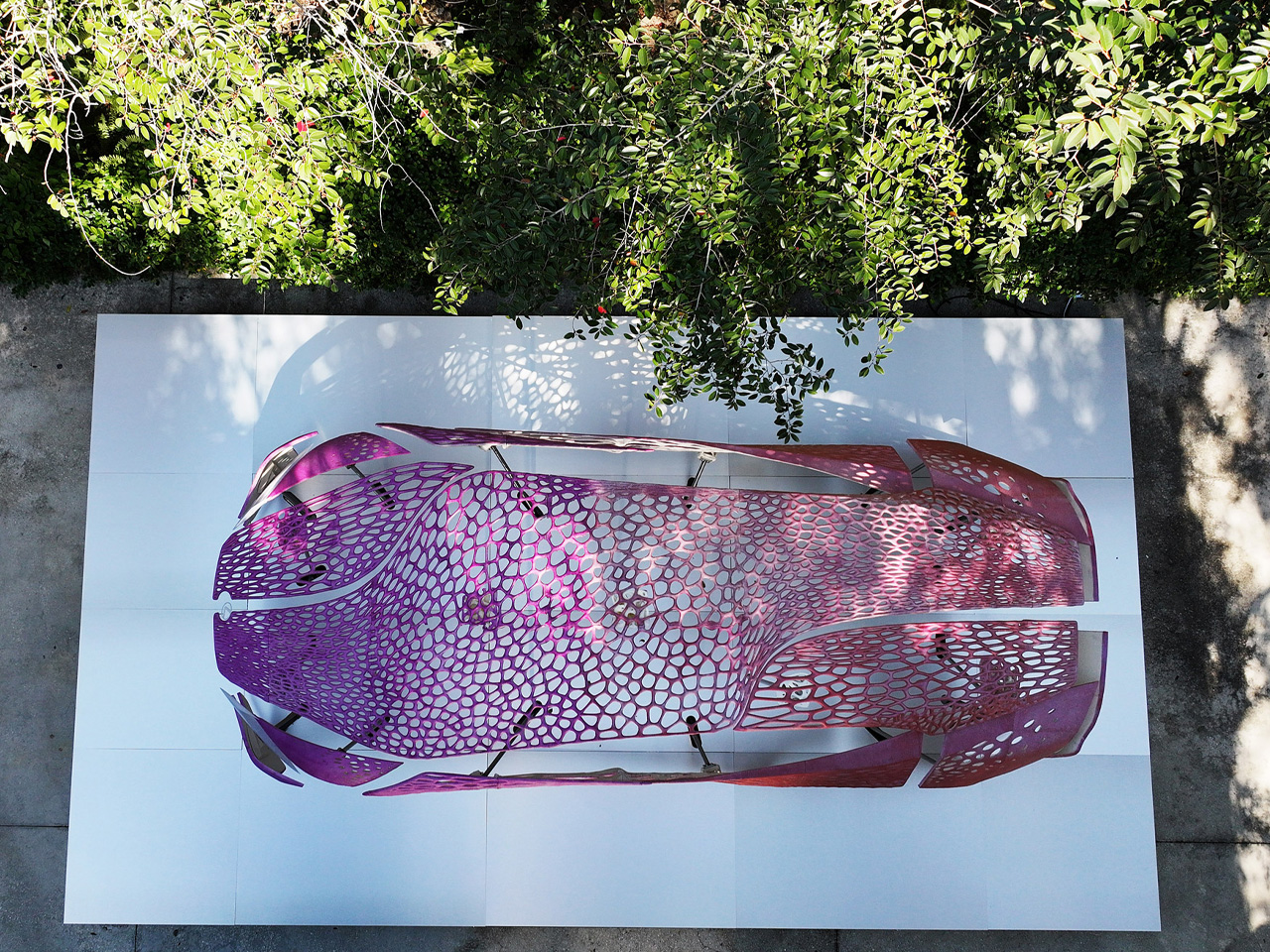
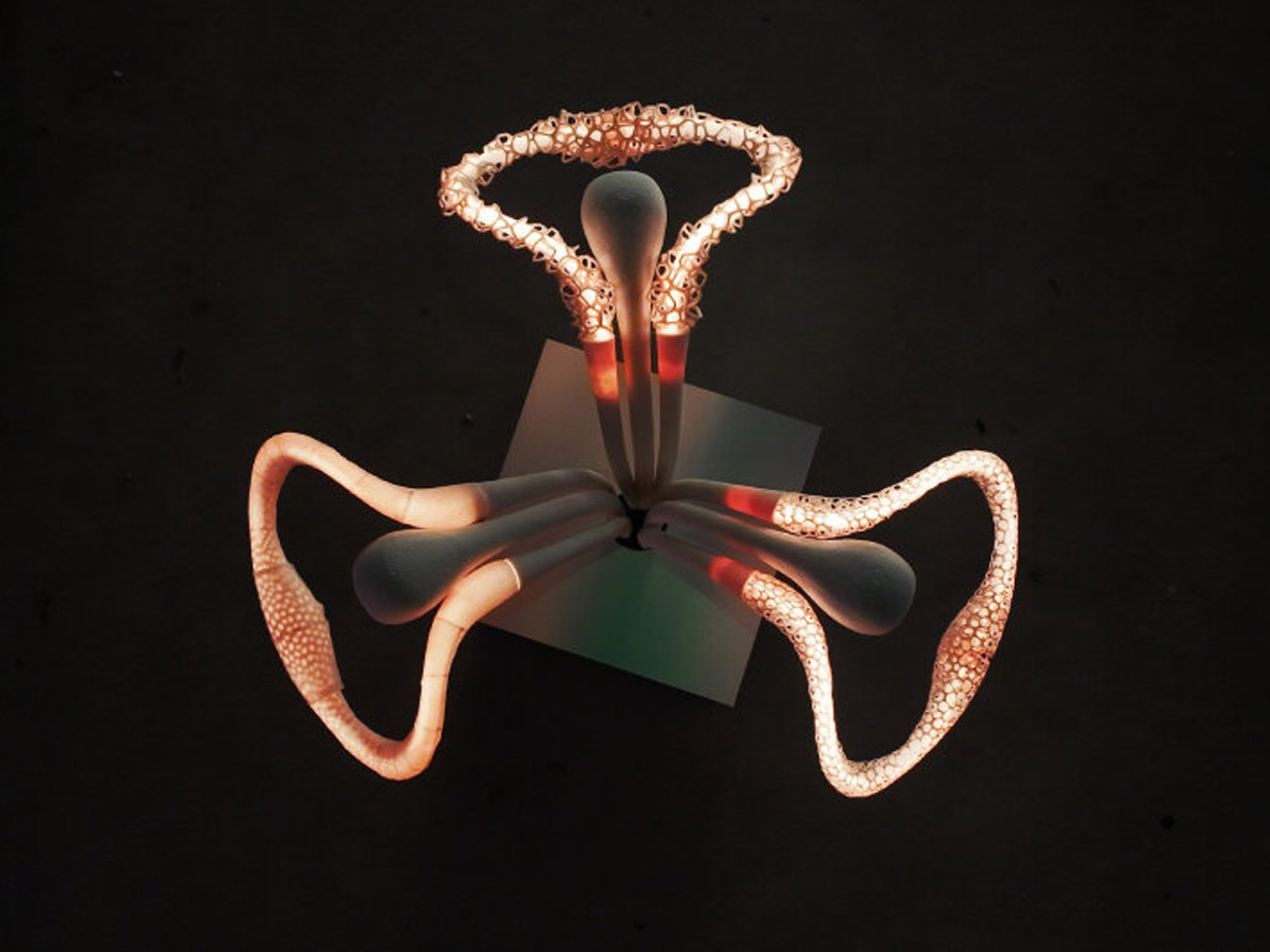
Along with the replica of the LF-ZC, there are three complementing satellite installations that incorporate the design elements of the car to showcase the sensory inputs ranging from audio and visual cues. One of them is a flower-like sculpture representing the futuristic steering wheel of the car in a rugged earthy texture. It reacts to the user’s touch, responding with fluctuation in the volume and intensity of the sound composition. The second complementing installation is a reinterpretation of the headrest that emanates a Lexus-inspired perfume in response to the user’s interaction. The last one is a wind-activated lattice-like sculpture that responds to any active stimuli to reveal the brand’s logo, owing to the sensitivity of the bioplastic material in response to the shift in UV radiation.
